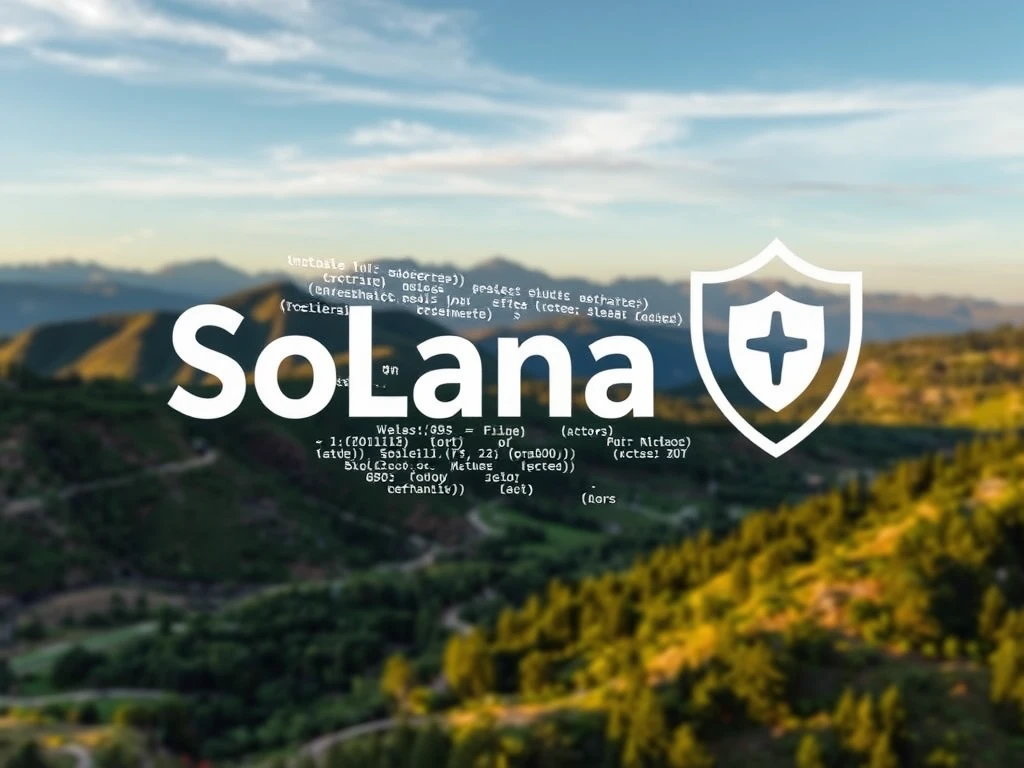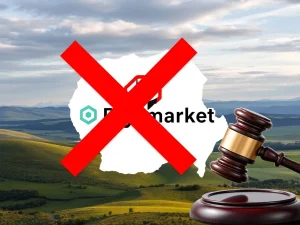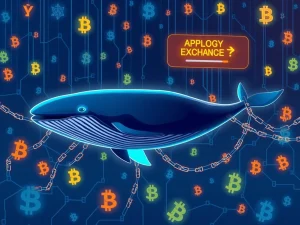Solana Security: Critical Bug Fixed Promptly

The Solana network recently faced a significant challenge: a critical bug that could have allowed attackers to mint unlimited amounts of certain tokens. This Solana bug fix is a major development for the ecosystem and important crypto news.
Understanding the Solana Security Issue
The Solana security vulnerability was a zero-day exploit affecting the network’s privacy-focused Token-22 confidential tokens. Discovered on April 16th, the bug resided within the Token-2022 program and the ZK ElGamal Proof program.
- Token-2022: Handles core token logic like minting and accounts.
- ZK ElGamal Proof: Verifies zero-knowledge proofs for accurate balances.
- The Flaw: Omitted algebraic components in the Fiat-Shamir Transformation’s hash transcript allowed attackers to forge proofs.
- Potential Impact: An attacker could potentially mint unauthorized Token-22 tokens and withdraw them from user accounts.
Fortunately, the Solana Foundation confirmed no known exploit occurred, and funds remained safe.
Swift Action: The Solana Bug Fix
Solana developers and validators acted quickly to address the issue. Two patches were developed and deployed soon after the vulnerability was found. A supermajority of Solana validators adopted these patches within about two days.
Several development firms were instrumental in this rapid response:
- Anza
- Firedancer
- Jito
- Asymmetric Research
- Neodyme
- OtterSec (also assisted)
This Solana bug fix demonstrates the network’s ability to coordinate during emergencies, a key factor in maintaining Solana security.
The Centralization Debate: Is Solana Too Coordinated?
While the speedy Solana bug fix was positive for Solana security, the private handling of the issue between the Solana Foundation and validators sparked debate regarding Solana centralization.
A Curve Finance contributor raised concerns about the close communication channels used, questioning the implications of such coordination.
Solana Labs CEO Anatoly Yakovenko responded, suggesting similar coordination would be necessary on other networks like Ethereum to handle critical bugs. He pointed to the concentration of validators on Ethereum within large staking operators and exchanges.
However, Ethereum community member Ryan Berckmans countered, arguing Ethereum’s client diversity provides a layer of decentralization Solana currently lacks. He noted Solana relies heavily on a single production-ready client (Agave), meaning bugs in that client are effectively protocol bugs. Ethereum’s most popular client, geth, has a smaller market share.
This discussion highlights a key challenge for Solana as it grows: balancing efficient coordination for security fixes with the goal of greater decentralization. Solana is working on introducing new clients like Firedancer to improve resilience, though achieving sufficient client diversity remains a future goal.
Summary: A Quick Fix and Ongoing Questions
The recent Solana bug fix successfully addressed a serious vulnerability affecting Token-22 and protected users from potential losses. This quick action is positive crypto news for the Solana ecosystem’s stability and Solana security.
However, the method of coordinating the fix has reignited discussions about Solana centralization. As the network matures, addressing these concerns through increased client diversity and transparent governance will be crucial for its long-term health and credibility in the decentralized space.









